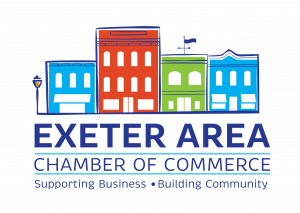Optimizing Workflows: Strategies to Keep Your Business Running Efficiently and Effectively
Every business thrives on its ability to operate smoothly, ensuring that tasks are completed on time, resources are allocated wisely, and productivity remains high. However, without a well-structured workflow, bottlenecks, miscommunication, and wasted time can become routine problems. Optimizing workflows isn’t just about working faster—it’s about working smarter. By refining your processes, leveraging technology, and fostering a culture of continuous improvement, you can create a system that enhances efficiency and delivers better results. Here are several effective ways to optimize your business workflows and keep operations running at peak performance.
Streamlining Communication Channels
Miscommunication is one of the biggest barriers to efficiency. If your team constantly struggles with unclear instructions or lost messages, productivity takes a hit. Establishing clear communication protocols, such as using project management tools, setting response time expectations, and defining preferred channels for different types of discussions, can eliminate confusion. When everyone knows where and how to communicate effectively, tasks move forward without unnecessary delays.
Streamlining Communication Channels
Incorporating an AI PDF summarizer into business process management transforms document handling by quickly extracting key insights from lengthy reports, contracts, and research materials. Rather than spending hours sifting through dense texts, teams can access concise summaries that highlight essential points, enabling faster and more informed decision-making. This is a good resource if you want to enhance efficiency, as it minimizes the risk of overlooking critical details while ensuring info is readily accessible.
Automating Repetitive Tasks
If your team spends hours every week handling the same repetitive tasks, you’re missing out on opportunities to be more productive. Automation tools can take over mundane processes like data entry, invoice processing, and email responses, freeing up your employees to focus on higher-value work. Investing in the right automation software allows you to reduce errors, speed up operations, and create a more efficient workflow without requiring extra manpower.
Eliminating Redundant Steps
Workflows often become inefficient due to unnecessary steps that slow everything down. Conduct a thorough audit of your processes to identify redundancies and eliminate anything that doesn’t add value. Whether it’s too many approval layers, outdated manual processes, or duplicate data entry, cutting out inefficiencies streamlines operations and improves overall productivity. Simplifying procedures doesn’t mean cutting corners—it means making every step count.
Enhancing Team Collaboration
Workflows function best when teams collaborate seamlessly. A disjointed team can lead to missed deadlines, repeated work, and frustration. Encouraging cross-departmental communication, implementing shared workspaces, and holding regular check-ins ensures that everyone stays aligned on goals and progress. When employees work together cohesively, workflows move forward efficiently, and projects reach completion without unnecessary roadblocks.
Setting Clear Performance Metrics
Without measurable goals, it’s impossible to determine whether your workflow improvements are actually effective. Establishing clear performance metrics allows you to track progress, identify weak points, and make data-driven adjustments. Whether you measure efficiency by turnaround time, output quality, or customer satisfaction, having benchmarks ensures that your workflows continue evolving in the right direction.
Utilizing Agile Methodologies
Rigid workflows often fail to keep up with the changing demands of business. Implementing agile methodologies, such as breaking projects into smaller phases and allowing for continuous feedback, creates a more adaptable system. This approach fosters flexibility, helping your business quickly respond to challenges and adjust processes in real time. Agile workflows ensure that efficiency isn’t sacrificed for the sake of structure.
Encouraging a Culture of Continuous Improvement
Workflows should never be static. Encouraging your team to regularly review and refine processes keeps operations dynamic and efficient. Holding post-project evaluations, seeking employee input, and being open to new technologies all contribute to a culture where optimization is an ongoing effort. When continuous improvement becomes part of your business mindset, workflow efficiency remains a top priority.
Optimizing workflows isn’t a one-time fix—it’s an evolving process that requires attention, adaptation, and a commitment to efficiency. By refining communication, automating repetitive tasks, cutting unnecessary steps, and fostering collaboration, you create a system that supports both productivity and growth. Keeping your workflows streamlined ensures that your business not only operates efficiently but is also well-positioned to adapt to future challenges.
Discover the vibrant Exeter area by exploring our comprehensive directory of local businesses, events, and community resources at exeterarea.org. Join us in supporting local commerce and culture—your engagement makes a difference!This Discover Local Deal is promoted by Exeter Area Chamber of Commerce.



